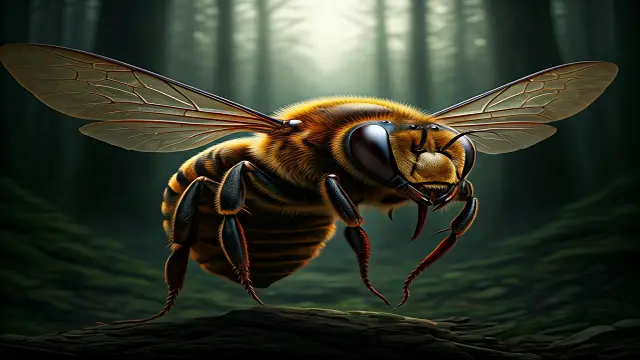In a thrilling turn of events, researchers have rediscovered Wallace’s Giant Bee, a species once thought to be extinct. This remarkable insect, known for its impressive size and unique features, has captured the attention of scientists and nature enthusiasts alike. Let’s dive into the fascinating world of Wallace’s Giant Bee and explore its significance.
What is Wallace’s Giant Bee?
Wallace’s Giant Bee, scientifically known as Megachile pluto, is an Indonesian species that boasts a wingspan of 2.5 inches (6.4 centimeters). This bee is not just large; it has enormous mandibles that resemble the jaws of a nightmare. These features make it one of the largest bees in the world.

Key Characteristics
- Wingspan: 2.5 inches (6.4 cm)
- Mandibles: Enormous and powerful
- Habitat: Native to the Maluku Islands in Indonesia
Brief History
Wallace’s Giant Bee was first discovered in 1858 by the famous naturalist Alfred Russel Wallace. However, it had not been seen since 1981, leading many to believe it was extinct. The last confirmed sighting was in the forests of North Maluku, Indonesia.
Rediscovery in 2023
In January 2023, researchers spotted this elusive bee in its natural habitat. This discovery was a significant moment for entomologists and conservationists, as it highlighted the importance of preserving biodiversity.
Why is Wallace’s Giant Bee Important?
The rediscovery of Wallace’s Giant Bee is crucial for several reasons:
- Biodiversity: It serves as a reminder of the rich biodiversity in Indonesia and the need to protect it.
- Ecosystem Health: Bees play a vital role in pollination, which is essential for healthy ecosystems and food production.
- Conservation Awareness: This finding raises awareness about endangered species and the importance of conservation efforts.
Habitat and Behavior
Wallace’s Giant Bee primarily inhabits forested areas. It builds its nests in termite mounds, which provide protection and a suitable environment for raising its young. The bee is solitary, unlike many other bee species that live in colonies.
Feeding Habits
- Nectar and Pollen: Wallace’s Giant Bee feeds on nectar and pollen from various flowering plants.
- Pollination: As it collects food, it inadvertently pollinates plants, contributing to the ecosystem.
Conservation Status
Despite its recent rediscovery, Wallace’s Giant Bee remains vulnerable. Habitat loss due to deforestation and climate change poses significant threats to its survival. Conservation efforts are essential to ensure this species does not vanish again.
Steps for Conservation
- Habitat Protection: Safeguarding natural habitats is crucial for the survival of Wallace’s Giant Bee.
- Research and Monitoring: Ongoing research is needed to monitor the population and health of this species.
- Public Awareness: Educating the public about the importance of bees and biodiversity can foster support for conservation initiatives.
How You Can Help
You can play a role in protecting Wallace’s Giant Bee and other endangered species. Here are some simple actions you can take:
- Support Conservation Organizations: Donate to or volunteer with organizations focused on wildlife conservation.
- Plant Native Flowers: Create a bee-friendly garden by planting native flowers that provide food for bees.
- Spread Awareness: Share information about Wallace’s Giant Bee and the importance of biodiversity with friends and family.
Conclusion
The rediscovery of Wallace’s Giant Bee is a beacon of hope for conservationists and nature lovers. This remarkable insect reminds us of the wonders of the natural world and the importance of protecting it. By taking action, we can help ensure that species like Wallace’s Giant Bee continue to thrive for generations to come.
Final Thoughts
Wallace’s Giant Bee is more than just a fascinating creature; it symbolizes the delicate balance of our ecosystems. Let’s work together to protect this “nightmare bee” and the incredible biodiversity it represents.

